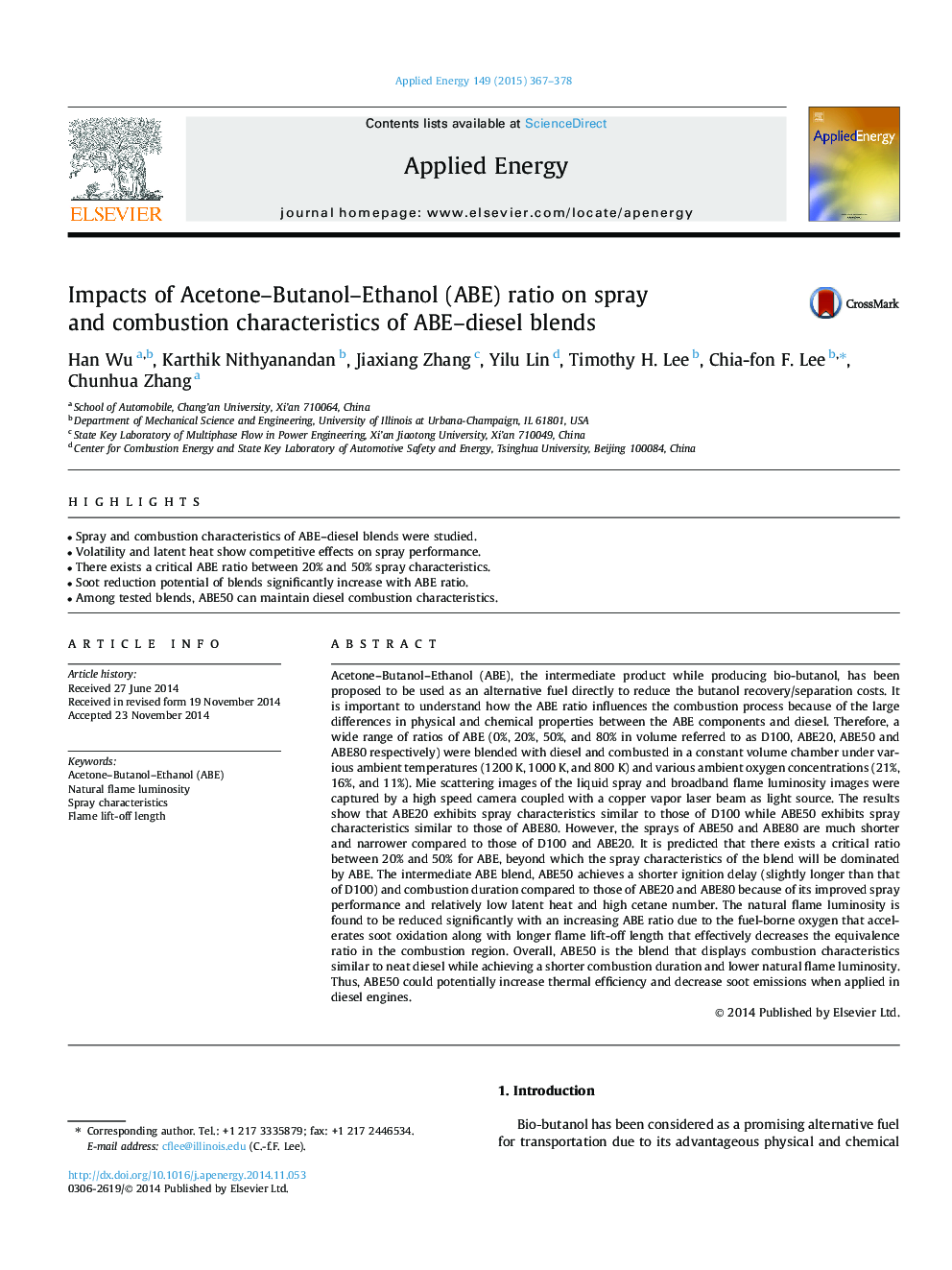| کد مقاله | کد نشریه | سال انتشار | مقاله انگلیسی | نسخه تمام متن |
|---|---|---|---|---|
| 6687200 | 501876 | 2015 | 12 صفحه PDF | دانلود رایگان |
عنوان انگلیسی مقاله ISI
Impacts of Acetone-Butanol-Ethanol (ABE) ratio on spray and combustion characteristics of ABE-diesel blends
دانلود مقاله + سفارش ترجمه
دانلود مقاله ISI انگلیسی
رایگان برای ایرانیان
کلمات کلیدی
موضوعات مرتبط
مهندسی و علوم پایه
مهندسی انرژی
مهندسی انرژی و فناوری های برق
پیش نمایش صفحه اول مقاله

چکیده انگلیسی
Acetone-Butanol-Ethanol (ABE), the intermediate product while producing bio-butanol, has been proposed to be used as an alternative fuel directly to reduce the butanol recovery/separation costs. It is important to understand how the ABE ratio influences the combustion process because of the large differences in physical and chemical properties between the ABE components and diesel. Therefore, a wide range of ratios of ABE (0%, 20%, 50%, and 80% in volume referred to as D100, ABE20, ABE50 and ABE80 respectively) were blended with diesel and combusted in a constant volume chamber under various ambient temperatures (1200Â K, 1000Â K, and 800Â K) and various ambient oxygen concentrations (21%, 16%, and 11%). Mie scattering images of the liquid spray and broadband flame luminosity images were captured by a high speed camera coupled with a copper vapor laser beam as light source. The results show that ABE20 exhibits spray characteristics similar to those of D100 while ABE50 exhibits spray characteristics similar to those of ABE80. However, the sprays of ABE50 and ABE80 are much shorter and narrower compared to those of D100 and ABE20. It is predicted that there exists a critical ratio between 20% and 50% for ABE, beyond which the spray characteristics of the blend will be dominated by ABE. The intermediate ABE blend, ABE50 achieves a shorter ignition delay (slightly longer than that of D100) and combustion duration compared to those of ABE20 and ABE80 because of its improved spray performance and relatively low latent heat and high cetane number. The natural flame luminosity is found to be reduced significantly with an increasing ABE ratio due to the fuel-borne oxygen that accelerates soot oxidation along with longer flame lift-off length that effectively decreases the equivalence ratio in the combustion region. Overall, ABE50 is the blend that displays combustion characteristics similar to neat diesel while achieving a shorter combustion duration and lower natural flame luminosity. Thus, ABE50 could potentially increase thermal efficiency and decrease soot emissions when applied in diesel engines.
ناشر
Database: Elsevier - ScienceDirect (ساینس دایرکت)
Journal: Applied Energy - Volume 149, 1 July 2015, Pages 367-378
Journal: Applied Energy - Volume 149, 1 July 2015, Pages 367-378
نویسندگان
Han Wu, Karthik Nithyanandan, Jiaxiang Zhang, Yilu Lin, Timothy H. Lee, Chia-fon F. Lee, Chunhua Zhang,